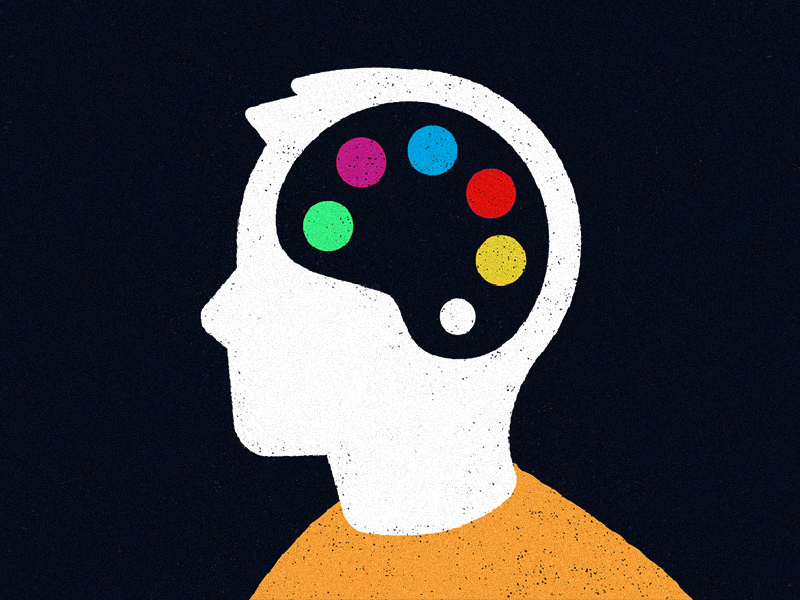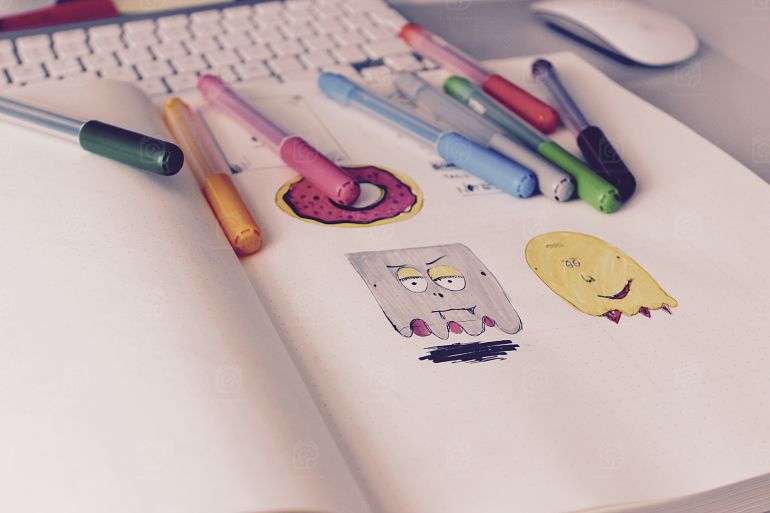A picture is worth a thousand words, so the saying goes, but maybe some pictures are worth more than others. Is it better to use photographs or illustrations? That's the question this article will examine.
As is so often the case, there is no definitive answer, however what is clear is that there are certain circumstances where one format is likely to give you better results than the other.
In the article we'll look at the different design scenarios where you could face a choice, and try to give some insight into why a particular format may be the best choice to go with in the given scenario.
Who this article is for
First things first, if you are a general tier graphic designer and only design logos, letterheads, and that kind of thing, you can probably stop reading because your hands are pretty much tied. There is little call for using photos in such cases, so you're stuck with illustrations with a few rare exceptions.
Otherwise there are many different genres within graphic design. We have website designers, marketing designers, book designers, poster designers, and even T-Shirt designers.
In all of these occupations, there are many situations where you could face a choice between using illustrations or photographic images in your designs. If you work in one of these occupations, then, this article is definitely for you.
 illustration by
illustration by
Impacts of basic psychology
Choosing the best format mostly comes down to what the goal of the desing is. In nearly every graphic design situation, the key reason for creating the design is to influence people.
Influencing people successfully involves understanding psychology. This is a major factor in why so many designers fail. It's because they don't understand psychology.
Being a good designer means being able to zero in on the trigger points that make people react to what they see. There are some other rare instances where we attempt to influence people using their other senses, but in general ours is a visual art.
There are many factors affecting what makes people react to visual stimuli. Some of these factors include:
- Color – colors affect people in different ways
- Size – sometimes making an image smaller or larger draws attention
- Text – usually more important than images in creating influence
- Symbolism – this can be employed overtly or covertly, and both styles are highly effective in creating influence.
How we use these elements to influence viewers is combining them to create an effect that makes the image persist in the mind, causes the viewer to pay attention and think about what they are seeing.
The triggers we are trying to create include one or more of the following:
- Intrigue – keep the mind working and make the viewer want to know more
- Empathy – experiencing vicariously what we see in the image
- Disgust – negative reactions are very effective motivators
- Anger – also an effective negative motivator
- Fear – the most effective negative motivator
- Greed – causing somebody to desire something they don't have
- Arousal – do we really need to tell you “sex sells”?
- Humor – a good laugh can release a flood of mind altering substances
- Wonder – close to intrigue but with less heavy overtones
Knowing which of these triggers you want to pull on your audience is actually one factor that can help you in making the choice between illustrations and photos. In particular, for all of the negative triggers, photos will normally do a better job.
In fact for the majority of marketing aimed at adults, photos will be the best choice, and the reason is because people relate more easily to real things than to imaginary things.

Children's marketing is different
When you are creating designs to influence children, the opposite is true. Kids seem to prefer abstract things, even to the point of shunning realism. Advertising that appears in comic books is usually entirely composed of illustrations for this very reason.
If you are marketing to children, using illustrations can be highly effective. However one thing to be careful of is to know whether your main advertising target is the child or the parent. Many marketers make the mistake of using cute cartoon imagery when they are trying to influence the parent, but that is not usually the best strategy.
Educational marketing
When designing educational marketing messages, whether the target demographic is adults or children, illustrations will usually be the best choice.
This is because the use of illustrations allows you more flexibility in how you present the message, and allows you to provide much more detail on a wide range of items.
If the photos you use in the design of an educational poster are very small, the can be suitable, but will still work best if encapsulated within highly stylized illustrated framing.

When clear detail is needed
Medical and scientific illustrator Ikumi Kayama explains many of the limitations photographs have in this article. As you can see, when clear detail is needed, photos are often not your best choice.
As an aside, it's also worth considering that medical and scientific illustrators are often the best people to hire for your product marketing designs, because of the very high level of detail that is habituated in them.
Marketing real products
Things which actually exist and you want to sell are best marketed using photographs. Even is this time when everyone is aware of PhotoShop and how easy it is to manipulate images, the belief persists that the camera doesn't lie.
When people can see for themselves the reality of the image you are presenting, they will believe in it. Show them an illustration, and their mind has to be convinced that reality will match the illustration. That means your text has to work harder.
Summing up
There is room for both photographs and illustrations in the design scenarios we face each day, but there are definitely situations where it's a better idea to employ one particular format as opposed to the other.
Always remember the nature of the message you are trying to present and the demographic you are presenting it to.
Hitting the right psychological triggers for your target audience in the right way is the key to delivering messages effectively.




Comments 0 Responses